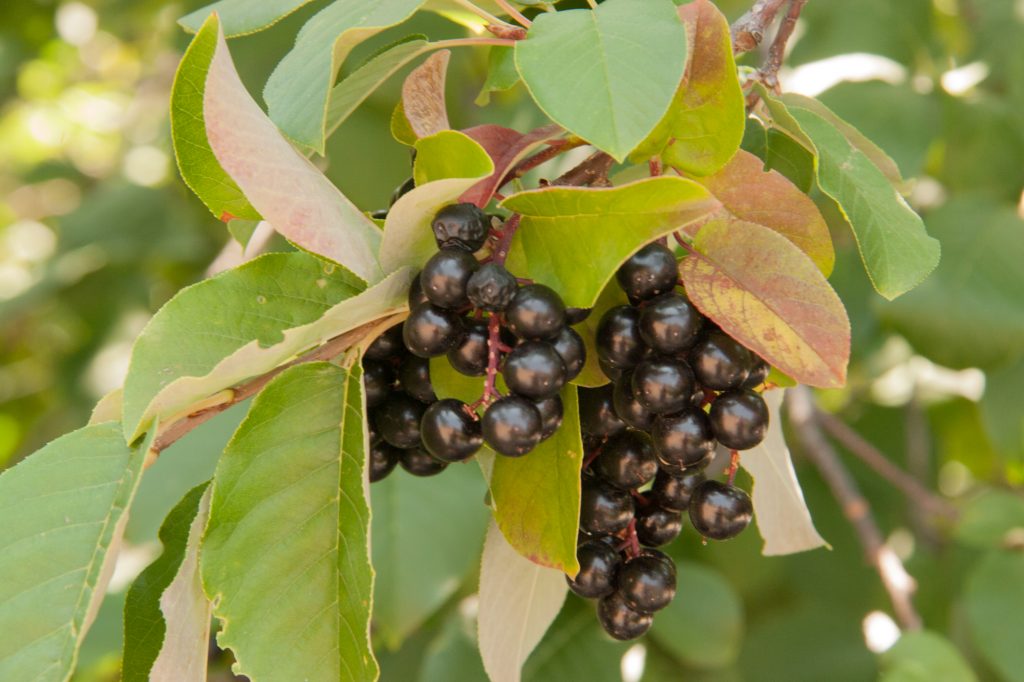
There are several species of chokecherry native to North America, but the one I harvest most often is Prunus virginiana. Most people consider it a weedy tree, but wildlife of all kinds appreciate the fruit, and in this instance I’m siding with the birds (and the bears and the raccoons). Underripe chokecherries are unpleasantly astringent, but let them ripen to a dark purple color and they sweeten up, making them one of my favorite summer fruits
Chokecherries are just one of several small-fruited, edible cherries. They grow as medium sized trees, or more often, as multi-stemmed shrubs. These are suckering plants, and form spreading clumps. The leaves have finely serrated margins and grayish-white undersides; flowers are held in bottle brush clusters of small white blooms. Each individual flower, when pollinated, turns into a small cherry. Don’t be fooled into thinking the red fruit is ripe; one bite will convince you otherwise.
Depending on where you live, chokecherries flower in April – June. The plants stand out in the landscape when they’re in bloom, so make a note when you pass a good clump, and check back in late summer or early fall. Chokecherry fruit will be red in mid-summer, but usually takes a month or more to fully ripen to a dark purple color. These are highly adaptable plants, equally at home in rich or poor soil, along roadsides, in ravines, or on the edges of woods and streams. They often cluster along fence lines; birds sitting on the fence digest the fruit and expel the seeds. (That’s a nice way of saying “poop out the seeds.”) Plants located in full sun will produce more fruit.
Plain old chokecherries aren’t often sold as landscape plants, but purple and red leaf cultivars of the tree have become popular. In the Rocky Mountains and Great Plains, where this fruit has always been appreciated, you can find the straight species for sale.
Historically, chokecherries were used by Native American tribes in pemmican, ground into flour, and dehydrated for long term preservation. Often, whole fruits, including the seeds, were mashed and dried.
You may read about the danger of consuming chokecherry pits because of the cyanide compound (prussic acid) they contain. Native peoples knew to let the cracked seeds dry in the sun for several days, which releases the potentially dangerous cyanide compounds.
Please don’t let fear stop you from harvesting this fruit. It’s easy to avoid the pits by juicing the fruit, then turning that juice into jelly, syrup, fruit leather, and wine. If you prefer jams to jellies, you can run the fruit through a food mill to remove the seeds.
Where I live, in New Mexico, chokecherry jelly is a traditional use for this tart fruit. I also love infusing rye whisky with chokecherries to make Chokecherry Bounce. Considering how high chokecherries are in antioxidants, I consider this a medicinal beverage. To your health!
Leave a Reply